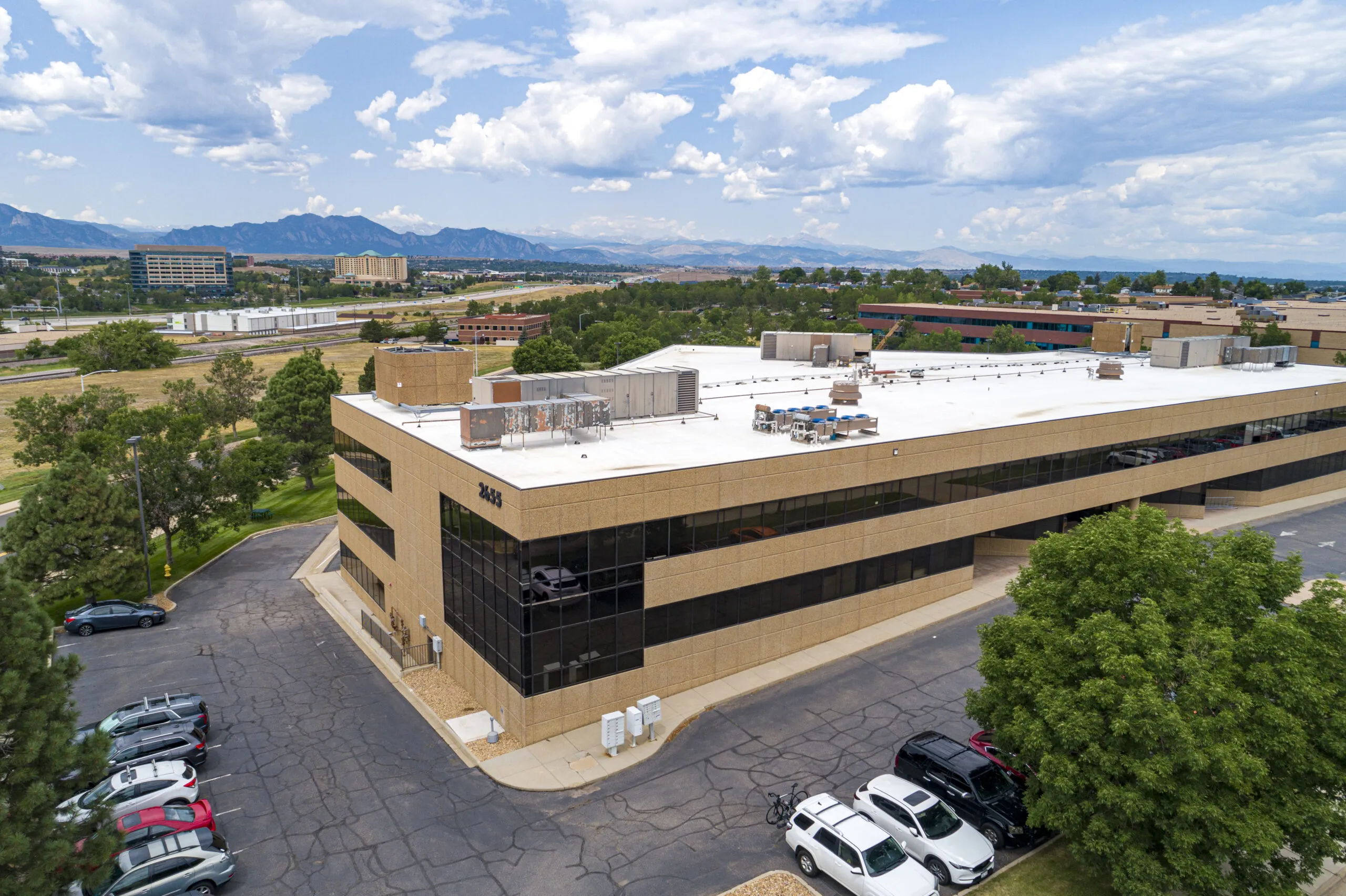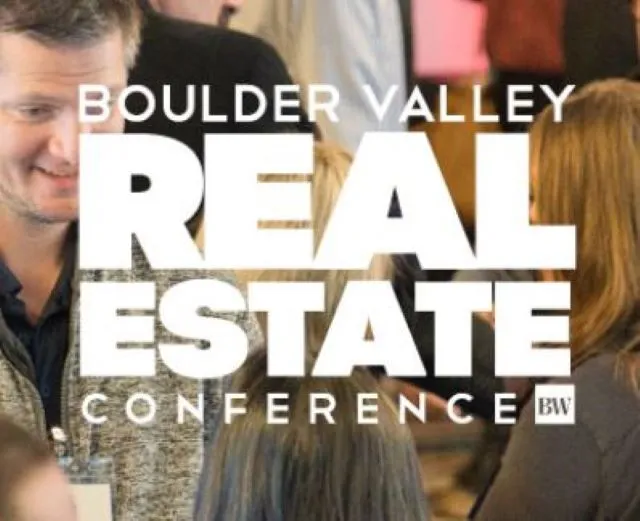Commercial brokers cite challenging Boulder market

BOULDER — Commercial real estate brokers are dealing with some intriguing dilemmas in the retail and office markets in the Boulder Valley but say the industrial sector has remained stable.
Speaking during BizWest’s annual Boulder Valley Real Estate Conference held Thursday at the Embassy Suites Hotel in Boulder, in a panel moderated by Geoffrey Keys, president of Keys Commercial Real Estate LLC, they predicted 2024 would bring more of the same.
The situation with post-pandemic office vacancies “looks a little bleak,” acknowledged Beau Gamble, president of Dean Callan & Co. “In downtown Boulder, depending on who you ask, we are tracking anywhere from high 20% to to mid 30% office vacancy, which is certainly a high-water mark for Boulder. If you’re out in the market looking for office space right now, in downtown Boulder specifically, if you do a search for 2,500 square feet to 10,000 square feet, you’re going to get more than 40 results right now, which is certainly a lot.”
SPONSORED CONTENT
Gamble said deals still are happening, but the high vacancy rate persists.
“It stems back from the start of COVID and the work-from-home model,” he said, “and the large adjustment companies have had to decide on whether they want to spend money on their office space or whether their employees will work from home full-time? Do they bring them back in the office? What’s their downside look like?
“Where we sit today is, I think, where we’re probably going to sit for the next six months or so,” Gamble said. “I hope I’m wrong. I hope everyone wants to come back to work. I hope the office market fully comes back, but we’re going to hover around this 25% to 35% vacancy model here for the next year or so.”
Todd Walsh, managing broker for Market Real Estate, added that “we’re dealing with a capital market right now where investors are on the sidelines, and tenants and occupants are reimagining what the office space needs to look like for their companies. It’s clearly a tenants’ and/or buyers’ market. They’re just on the sidelines because, with interest rates on simple savings accounts at 5% or greater, they’ll just kind of sit and wait and see. I’m hoping that won’t be the case for much longer, but we’ll have to see.”
Despite last week’s news that co-working giant WeWork Inc. (NYSE: WE), which filed for Chapter 11 bankruptcy in New Jersey but does not appear to have immediate aims to jettison its Boulder operations, Gamble said “co-working and single-office space is actually doing really well. Part of that is that companies don’t know where they’re at or they don’t know what the future of their company is, so co-working space, small office space, allows them flexibility.
“Co-working is here to stay,” Gamble said. “Especially in the suburban markets outside Boulder, I would expect to see a lot more opportunities for folks where they live in their neighborhood could go to a building with a single office or shared office space.”
The retail market “begins with consumer spending, and our consumer spending remains strong,” said Walsh. “We continue to have people traveling to Boulder.”
Referring to the nationwide hype generated by the arrival of Deion “Coach Prime” Sanders at the reins of the University of Colorado Boulder’s football team, Walsh said “obviously our university is a huge hit recently, for some reason. I looked at the ‘Prime effect’ here: Sales and use taxes for the University of Colorado line item went up 223%.
“So there are a lot of great reasons; people are going out to shop, to spend money. I think retail’s done really well.”
Compared with the office-vacancy issue, Walsh said, in all retail buildings in the city of Boulder, “unoccupied space is less than 7%. That’s very healthy in the market.”
Although rents are not climbing as they have in the past, Walsh said, “they’re not dropping or even stagnating, so I think landlords are able to monetize deals.”
Not that retail vacancies aren’t an issue, Walsh said.
“The one aspect of retail that I think will continue to have sustained vacancies is first-generation space,” he said. “We saw as north Boulder developed, it took awhile for that retail to take hold and for restaurants to become truly successful. We’re seeing that play out in the Armory development, and some other mixed-use projects were kind of forced to have a bit of retail that they would otherwise have preferred to just stick with residential.
“Tenant improvements, cost of construction and labor are always going to be an issue for some of these newer projects to kind of make good economic deals,” he said, “so I’ve seen landlords get really creative with percentage-rent deals to draw in really great retailers.”
The Hill, which historically always has had a bumpy road, “is going to be a good place for opportunity in years to come,” Walsh said, adding that a new hotel, a conference center and CU’s “Prime effect” has helped.
The one stable market in the Boulder Valley and many other areas is industrial, said Eric Rutherford, a broker associate at WK Real Estate.
“The industrial market has really stayed the same,” and for good reason, he said. “The chairs you sit on, the pens you write with, the food you eat — it all came from industrial buildings. So there still needs to be a place to store these types of products. In addition, when we talk about industrial, you still can’t assemble or manufacture a product on the kitchen stove. You still need to go to a place to put it together, and you still need to have an overhead door to ship it out rather than through your front door.”
The industrial sector has a “bright future,” Rutherford said. “As a history major, I’ve always tried to look at the big picture. I see industrial coming back. We see robotics are taking over. We have access to gas, oil, electric.”
Another bright spot is the life-sciences sector, Gamble said.
“The life-science market is here to stay,” he said. “All these institutional investment groups came in and bought Boulder County assets, and they’re going to convert these office, industrial flex buildings to life science. They want $70 triple net.
“Twenty months ago in Boulder County, we were tracking about 2 million square feet of life-science requirements,” Gamble said. “Today, I think life science goes along with how the economy goes. We’re tracking only about 350,000 to 500,000 square feet of these requirements. That number can also be skewed because we have companies that are saying, ‘Hey, we’re looking at the Boulder County market and we need 100,000 square feet. But, guess what? We’re also looking at Austin and Charleston and Seattle.’
“And so where these groups go in really affects how we track the demand for life science,” he said. “Life science on a smaller scale is still needed. Groups coming out of these co-working spaces and startups” – such as technology-transfer entities emerging from CU’s Anschutz medical campus in Aurora – “are going to need lab space, and need lab space now. So a lot of these buildings that are coming out of the ground are going to be able to support these groups, and they’re going to pay for it.”
Even so, Rutherford noted, “we really have to manage expectations of tenants about how long it takes to get city permitting.”
The sharp rise in property taxes is an issue in leased residential space as well as commercial real estate, Rutherford said.
“Real estate taxes for commercial are passed by the landlord to the tenant. Those are called triple-net leases,” said Rutherford, referring to leases in which the tenant pays rent and utilities as well as three other types of property expenses: insurance, maintenance, and taxes. Whereas “in multi-family, which I own, the property taxes are absorbed by the landlord,” he added. “I had a tenant who looked at the triple-net and I explained why that went up, and they decided not to take the deal. The fact that I told them property taxes go to a good cause fell on deaf ears; they didn’t want to hear that at that point. So for me, property taxes lowered the value of a $2.5 million apartment building to $2.3 million. Just yesterday, I lost a deal due to the increase in those property taxes.”
Those mountain property taxes worry Walsh as well.
“How much more can you put on the camel’s back? Taxing real estate is a backward-looking formula,” he said. “We’ve had some great years, and so the county assessor’s catching up with that. Economics have to make sense, and taxes are always passed through to the occupants, the tenants. We’re trying to make margins work. There’s only so much these commercial markets can handle economically. We have clients that are looking at 300% increases in taxes alone.”
One of the barometers that real estate investors watch is capitalization rates. As defined by Investopedia, “the ‘cap rate’ is calculated by dividing net operating income by the total cost of a property. Expressed as a percentage, the cap rate represents the investment returns from different properties.” Investors use cap rates to compare the returns of different properties. For example, according to J.P. Morgan & Co., a property worth $14 million generating $600,000 of NOI would have a cap rate of 4.3%.
“Rates are really high, especially here in Boulder County,” Gamble said. “Sellers that have seen previous deals get done have seen them get done at super-high numbers per square foot and super-low cap rates.
“So we’re in a situation where a buyer is looking at an asset, and they’re speaking with their lender, and oftentimes it’s a negative-leverage deal, where we still see 5-cap, 6-cap investment opportunities here. It’s really touch and go,” he said. “We need to do a better job as brokers, especially to our clients who are sellers, on navigating the challenges with what investors can actually afford today versus the number they were offered two years ago or 18 months ago.”
“Economics are such that you have to get creative, and often that happens outside regular listing,” Walsh added. “So we are seeing some transactions. We are seeing a lot of seller financing right now. The ones that we are seeing done are sophisticated investors that see real upside; they know that they’re buying at the right time because that’s when the buyer has the most leverage and can potentially draw the best deal.
“Right now, I think, is the right time to get into the market,” he said. “It’s just finding those deals. You can’t just turn on your computer and click away; you’ve got to get a little creative.”
Even in a buyer’s market, Rutherford said, there will be people needing to sell, especially for reasons he calls “the five Ds: death, debt, disability, disaster and divorce – divorce means partnerships.
“These are five reasons people sell,” he said, “and this is a golden opportunity for good brokers to educate themselves in each one of these situations, because to do the deal requires a different skill set. Sellers have to sell for these reasons, so you have to engage with them hard, you have to educate yourself and really reach out to the seller.
“The question I always ask is, ‘What’s the end game here? Where do you see yourself at the end of this transaction?’ And then you try your hardest to get them to that point.”
Overall, the brokers expressed general optimism about the commercial real estate climate in the Boulder Valley.
“If you are a tenant-rep broker, or you’re a tenant in the marketplace right now, advantage: you,” Gamble said. “You’re going to be able to get the most out of landlords as far as concession goes, TIs, free rent, lower lease rates than you typically would in our market.”
Walsh said his business is “actually up on the number of transactions by about 20% so far this year – but we’re making half as much money.
“We’re definitely helping more and more companies, putting together more transactions than we’ve ever done in my 20 years of business,” he said, “but we have to do it for a lot less. That five-year tenant that wanted 10,000 square feet is now a two-year tenant that wants 4,000 square feet. I think if we’re more active and more present, if we provide more value to our clients right now, those dividends are going to pay off in the future. But yeah, it’s hard, and it gets exhausting at times.”
Today’s commercial market, Gamble said, “will be similar to where we sit in six months or so. I don’t think rates are going to move tremendously at all.”
Walsh said he hopes to see “more transactions in retail because I think economics are bound to change. I think consumer spending remains strong. I think industrial will always be a stable market. For office, my hope is that we’ll start to find creative ways to re-tenant those buildings. We’ll provide more services to our tenants downtown. I think there’s some interesting users we hope to attract.”
Times may be harder in other places, Rutherford said, but not so much in this region.
“When I think of a real-estate recession, I think of overbuilding, people leaving, and too much land,” he said. “I don’t see any of that in Boulder County, especially west of 287.”
BOULDER — Commercial real estate brokers are dealing with some intriguing dilemmas in the retail and office markets in the Boulder Valley but say the industrial sector has remained stable.
Speaking during BizWest’s annual Boulder Valley Real Estate Conference held Thursday at the Embassy Suites Hotel in Boulder, in a panel moderated by Geoffrey Keys, president of Keys Commercial Real Estate LLC, they predicted 2024 would bring more of the same.
The situation with post-pandemic office vacancies “looks a little bleak,” acknowledged Beau Gamble, president of Dean Callan & Co. “In downtown Boulder, depending on who you ask, we are tracking anywhere…





